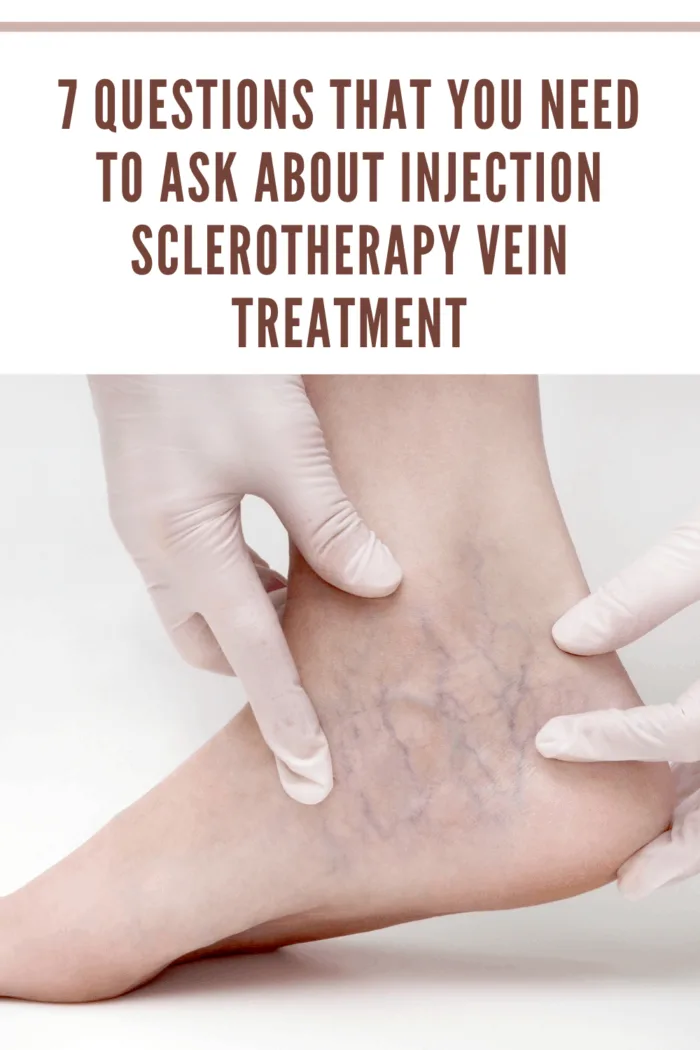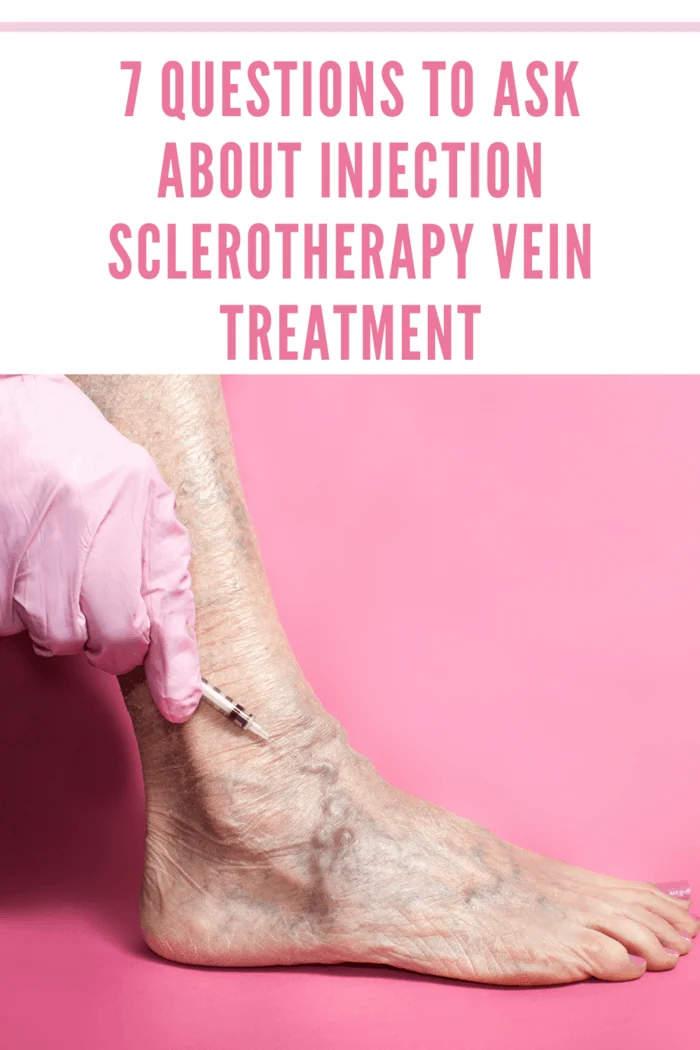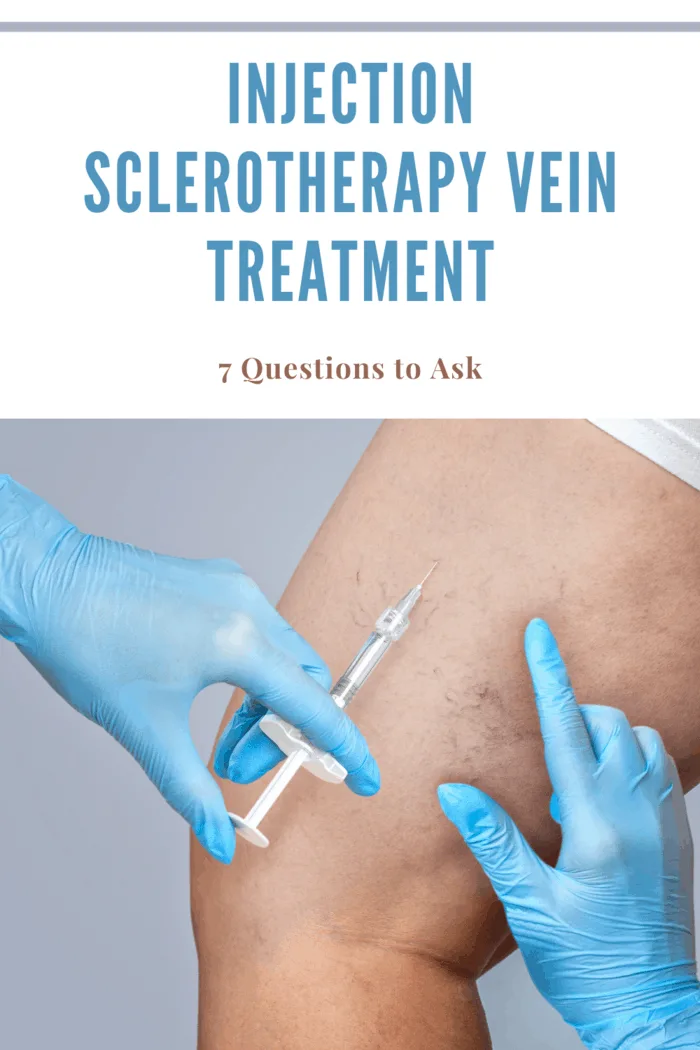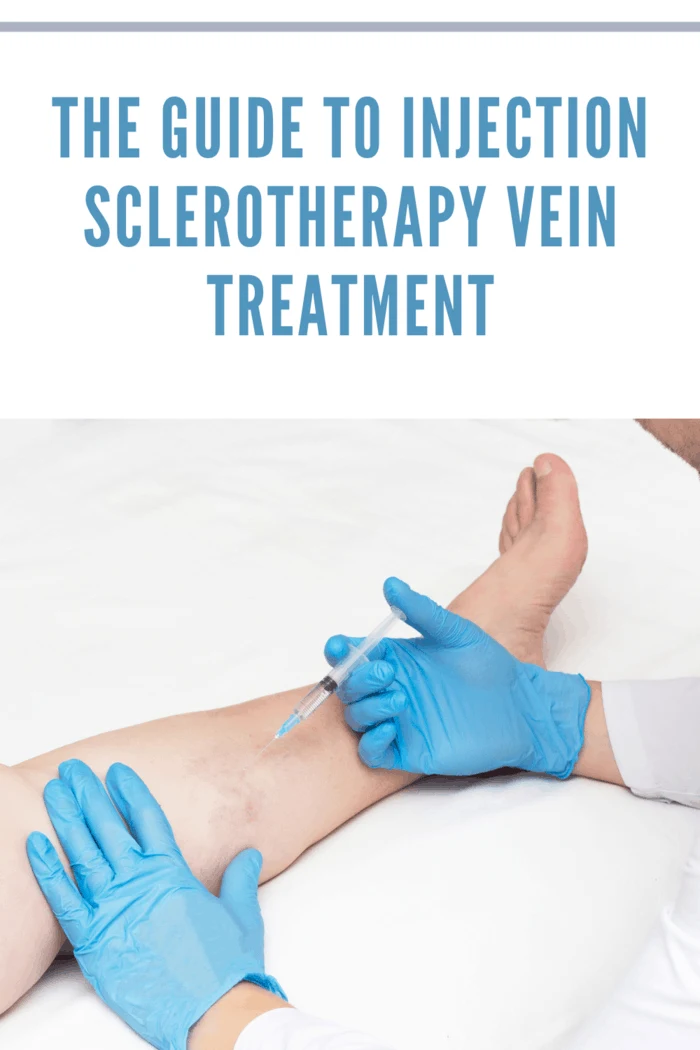Even though the procedure is used widely, patients have some questions about it. Here is the list of the most common questions asked injection sclerotherapy vein treatment:
As vein disease becomes a common health concern, constant efforts are being made to find optimal treatment options for the condition.
Sclerotherapy is a medical procedure for eliminating varicose veins and spider veins.
It is being used since the 1930s and has been proven safe and effective over decades of use and thousands of patients being treated.
A sclerosant (an irritating chemical) is injected directly into the vein.
The chemical causes damage to the endothelium, the vein’s inner lining.
This results in the formation of a clot that blocks the circulation in the vein beyond.
Gradually, the vein turns into scar tissue because of the absence of circulation and then fades from the view.

Q1: Am I the right candidate for the procedure?
Sclerotherapy is the ideal treatment option for people with venous insufficiency poorly controlled with compression stockings.
It is apt for individuals who are not obese.
Also, healthy individuals having small but unsightly superficial veins can opt for the treatment for fast and effective results.
According to a specialist in varicose veins, initial consultation with a vascular medicine specialist and a dermatologist is recommended to ensure that the treatment is suitable in your case.
Q2: What are the preparatory stages of the treatment?
After the initial consultation with a specialist, the patient must undergo screening using the ultrasound technique.
This enables the specialist to determine the exact site of the venous disease before administering the treatment.
The diagnostic tests are often bypassed if the patient seeks treatment for only a small area of spider veins.
The patient should talk to the doctor about all kinds of medications and supplements he may be taking because they may be asked to skip them before the procedure.

Q3: How are the sclerotherapy injections administered?
The procedure involves an injection of a sclerosant into the affected area.
While sodium tetradecyl sulfate and polidocanol are the two FDA-approved sclerosants used in the technique, hypertonic saline is injected into small veins.
The sclerosant is injected as foam using a needle of the appropriate caliber.
Q4: Is the procedure painful?
The procedure can cause some degree of pain because it requires the injection of chemicals into the skin.
The pain lasts for only a few minutes and is more when the injection is administered to a more prominent vein.
Some chemicals can cause more pain as compared to others.
The procedure can get more painful if the sclerosant gets deposited outside the vein rather than inside it.

Q5: Are there any side effects of sclerotherapy?
Some of the milder side effects of the procedure include itching, bruising, and redness of the injection site.
The more prominent veins may become hard and lumpy in some patients and may take several months to disappear.
Some patients may experience the localized appearance of brown spots or lines.
Another side effect of the procedure is neovascularization, which refers to the appearance of tiny, new blood vessels at the injection site.
These veins can surface a few days after the procedure and are generally self-resolving. The doctor should immediately report symptoms such as a sudden swelling in the leg, ulcer formation at the injection site, and inflammation in the groin area.
Q6: What should I expect after the procedure?
The procedure is performed on an outpatient basis, and the patient is discharged on the same day.
As the after-care routine, the patient needs to wear compression dressing for 1-3 weeks after the treatment.
A follow-up visit is also recommended within two weeks of the procedure.
The doctor will generally perform an evacuation of the clots in more prominent veins to improve the appearance and prognosis of the treatment.

Q7: How effective is sclerotherapy?
Sclerotherapy is an effective treatment option, with studies indicating that nearly 50-80% of the injected veins may get eliminated after every session.
There are hardly 10% of patients who do not respond positively to this procedure.
Spider veins are resolved earliest, taking only a few weeks to disappear. On the other hand, larger veins may disappear only 3-4 months.
Veins that disappear once will not reappear, but new ones may surface in those with a tendency.
These common questions clarify all the major concerns related to sclerotherapy.
After knowing these answers, the patient can proceed with confidence and trust, provided that he has an expert at his side.
